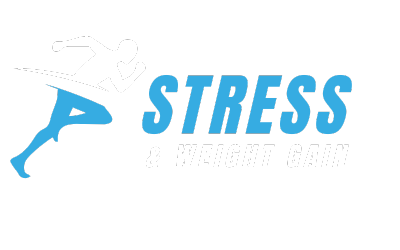Physical Activity: Your Secret Weapon Against Stress And Weight Gain
Are you feeling stressed out and noticing some unwanted weight gain? Well, I have some good news for you. Did you know that physical activity can be your secret weapon against stress and weight gain? It’s true! In this article, we’re going to discuss how engaging in regular physical activity can not only help you manage stress but also prevent weight gain. So, if you’re ready to learn more, keep reading!
When life gets busy and stressful, it’s easy to overlook the importance of physical activity. However, incorporating regular exercise into your routine can work wonders for both your mental and physical health. Physical activity releases endorphins, which are natural mood boosters, helping to reduce stress and increase feelings of happiness. Furthermore, exercising regularly can also provide a much-needed outlet for pent-up stress and tension. Whether it’s going for a run, hitting the gym, or practicing yoga, finding a physical activity that you enjoy can be a great way to blow off steam and relax. Plus, the benefits of physical activity don’t stop there! It also plays a crucial role in weight management. Regular exercise can increase your metabolism, helping you burn calories and maintain a healthy weight. So, if you’re looking to combat stress and prevent weight gain, physical activity is your secret weapon. But don’t worry, we’ll dive into all the details in the rest of this article.

The Importance of Physical Activity
In today’s fast-paced and stressful world, finding ways to reduce stress levels and maintain a healthy weight can be a real challenge. However, one secret weapon that you have at your disposal is physical activity. Engaging in regular exercise not only helps to reduce stress, but it also prevents weight gain and boosts your mood and mental well-being. So let’s dive into how physical activity can be your ultimate ally in combating stress and weight gain.
Reducing Stress Levels through Exercise
One of the most notable benefits of physical activity is its ability to reduce stress levels. When you engage in exercise, your body releases endorphins, also known as feel-good hormones. These endorphins not only provide a natural high, but they also help to alleviate stress and improve your overall mood.
Release of Endorphins
The release of endorphins during exercise helps to stimulate positive feelings and reduce stress and anxiety. These neurotransmitters act as natural painkillers and create a sense of euphoria, commonly referred to as the “runner’s high.” So whether you choose to go for a run, join a yoga class, or lift weights at the gym, you can count on the release of endorphins to give you that uplifting feeling and reduce stress.
Improving Sleep Patterns
Another way that physical activity helps to reduce stress is by improving sleep patterns. Regular exercise promotes better quality sleep, which in turn reduces stress levels. When you exercise, your body temperature rises, and afterward, it gradually decreases, signaling your body that it’s time to sleep. Additionally, physical activity helps to tire your body and mind, making it easier to fall asleep and stay asleep throughout the night.
Providing a Healthy Outlet for Stress
Engaging in physical activity provides you with a healthy outlet to release pent-up stress and frustration. Instead of turning to unhealthy coping mechanisms like emotional eating or turning to alcohol, exercise offers a positive way to channel your stress. Whether it’s through the rhythmic movements of running, the mindfulness of yoga, or the intensity of high-intensity interval training (HIIT), physical activity allows you to let go of stress and find a sense of calm and balance.

The Relationship between Physical Activity and Weight Gain
In addition to reducing stress levels, regular physical activity is crucial in preventing weight gain. By burning calories and fat, maintaining metabolism, and controlling appetite and cravings, exercise plays a vital role in achieving and maintaining a healthy weight.
Burning Calories and Fat
Engaging in physical activity burns calories and helps to shed excess body fat. Whether you’re engaging in aerobic exercises like running, biking, or swimming, or weightlifting, your body requires energy to perform these activities. As a result, it taps into its energy stores, including fat, to fuel your workout. Over time, this calorie burning effect leads to weight loss or weight maintenance.
Maintaining Metabolism
Regular exercise helps to maintain a healthy metabolism, which is essential for maintaining a healthy weight. As we age, our metabolism naturally slows down, making it easier to gain weight. However, by engaging in physical activity, you can boost your metabolism and counteract this natural decline. Exercise helps to build lean muscle mass, which is more metabolically active than fat. As a result, your body burns more calories even at rest, allowing you to better regulate your weight.
Controlling Appetite and Cravings
Physical activity can also help to control appetite and cravings, which are common culprits of weight gain. When you exercise, your body releases hormones that suppress appetite, making you feel less hungry. Additionally, regular exercise has been shown to reduce cravings, particularly for unhealthy, high-calorie foods. By maintaining a consistent exercise routine, you can better manage your food intake and make healthier choices, ultimately leading to weight maintenance or weight loss.
A Stronger Mind and Body through Regular Exercise
Beyond reducing stress levels and preventing weight gain, regular exercise also strengthens your mind and body. By improving cognitive function, increasing energy levels, and enhancing overall physical health, physical activity plays a key role in maintaining optimal well-being.
Improving Cognitive Function
Exercise has been shown to improve cognitive function, including memory, attention, and problem-solving skills. When you engage in physical activity, blood flow to the brain increases, delivering oxygen and nutrients that nourish and support brain function. Additionally, exercise stimulates the production of growth factors that promote the formation of new neural connections, improving brain plasticity and cognitive abilities.
Increasing Energy Levels
Contrary to what you might think, physical activity actually boosts your energy levels instead of draining them. When you exercise, your body releases chemicals like adrenaline and norepinephrine that increase alertness and energy. Regular exercise also improves cardiovascular health, allowing oxygen and nutrients to be more efficiently delivered to your muscles and organs, resulting in overall increased energy levels throughout the day.
Improving Overall Physical Health
A sedentary lifestyle is associated with a variety of health problems, including heart disease, diabetes, and obesity. On the other hand, engaging in regular physical activity helps to improve overall physical health. It strengthens your muscles, bones, and joints, reducing the risk of injury and chronic conditions like osteoporosis and arthritis. Additionally, exercise improves cardiovascular health by lowering blood pressure and reducing the risk of heart disease. By prioritizing physical activity, you can enhance your overall well-being and longevity.

Choosing the Right Exercise Routine
When it comes to physical activity, finding the right exercise routine is crucial to ensure long-term success. By setting realistic goals, incorporating variety, and finding enjoyment in physical activity, you can create a sustainable exercise routine that you’ll stick to.
Setting Realistic Goals
Setting realistic goals is essential to avoid frustration and burnout. Be honest with yourself about your current fitness level and set achievable goals that align with your lifestyle and abilities. Whether you aim to exercise three times per week, run a marathon, or simply improve your flexibility, setting realistic goals will make it easier to stay motivated and committed to your exercise routine.
Incorporating Variety
Varying your exercise routine not only keeps things interesting but also ensures that you target different muscle groups and reap a variety of health benefits. Incorporate a mix of cardiovascular exercises, strength training, and flexibility exercises into your routine. Try new activities such as dance, hiking, or martial arts to challenge yourself and prevent boredom. By incorporating variety, you’ll be more likely to stick with your exercise routine in the long run.
Finding Enjoyment in Physical Activity
The key to maintaining a consistent exercise routine is finding activities that you genuinely enjoy. Experiment with different forms of exercise until you find something that sparks joy and keeps you motivated. Whether it’s dancing, swimming, cycling, or playing a team sport, finding enjoyment in physical activity will make it easier to stay committed and reap the many benefits that exercise has to offer.
Tips for Getting Started with Physical Activity
Getting started with physical activity can feel overwhelming, but with the right mindset and a few essential tips, you can overcome the barriers and embark on a fulfilling fitness journey.
Consulting with a Doctor
Before starting any exercise program, it’s essential to consult with your doctor, especially if you have any underlying health conditions or concerns. Your doctor can assess your current state of health and provide valuable guidance on the types and intensities of exercise that are suitable for you. Consulting with a healthcare professional ensures that you embark on your fitness journey safely and effectively.
Starting Slowly and Gradually Increasing Intensity
When starting with physical activity, it’s important to listen to your body and start slowly. Begin with low-impact exercises and shorter durations, gradually increasing intensity, duration, and frequency as your fitness improves. This gradual progression allows your body to adapt and reduces the risk of injury or burnout. Remember, Rome wasn’t built in a day, and the same goes for your fitness journey.
Creating a Schedule and Sticking to It
To make physical activity a part of your daily life, create a schedule and stick to it. Treat your exercise routine like any other important appointment and prioritize it. Block off dedicated time for physical activity in your calendar and make it non-negotiable. Whether it’s a morning run, lunchtime gym session, or evening yoga class, establishing consistency through routine is key to making exercise a sustainable habit.

Overcoming Barriers to Regular Exercise
While starting an exercise routine is a positive step, it’s important to address and overcome the barriers that may hinder your progress. By finding time in a busy schedule, addressing physical limitations, and dealing with a lack of motivation, you can successfully incorporate physical activity into your life.
Finding Time in a Busy Schedule
Finding time to exercise in a busy schedule can be challenging, but it’s not impossible. Look for opportunities to incorporate physical activity throughout your day, such as taking the stairs instead of the elevator, going for a walk during lunch breaks, or waking up earlier to fit in a workout. Be creative and make the most of the time you have. Remember, even short bursts of activity can add up and make a significant difference.
Addressing Physical Limitations
It’s important to acknowledge and work around any physical limitations or injuries that may hinder your ability to exercise. Consult with a health professional, such as a physical therapist, who can guide you on exercises that are safe and suitable for your specific needs. By adapting your routine and focusing on exercises that accommodate your limitations, you can still engage in physical activity and enjoy the many associated benefits.
Dealing with Lack of Motivation
Lack of motivation is a common barrier when it comes to regular exercise. However, there are strategies to overcome this hurdle. Find an accountability partner or join exercise groups or classes to stay motivated through support and camaraderie. Set short-term goals and reward yourself when you achieve them. Remind yourself of the mental and physical benefits that come with regular exercise. By acknowledging the lack of motivation and finding strategies to combat it, you can push through and stay on track with your exercise routine.
The Role of Social Support in Maintaining Physical Activity
Social support can be a game-changer when it comes to maintaining physical activity. By joining exercise groups or classes, finding workout buddies, and seeking encouragement from friends and family, you can enhance your motivation and have a more enjoyable exercise experience.
Joining Exercise Groups or Classes
Joining exercise groups or classes provides a sense of community and support that can significantly boost your motivation. Whether it’s a group fitness class, a running club, or a sports team, being surrounded by like-minded individuals who share similar goals can foster a sense of camaraderie and keep you accountable. You’ll not only benefit from the expertise of instructors and coaches but also find the encouragement and support necessary to stay on track.
Finding Workout Buddies
Having a workout buddy can make physical activity more fun and increase your commitment to an exercise routine. Partnering up with a friend, relative, or colleague who shares your fitness goals allows you to motivate and push each other during workouts. It’s also a great way to spend quality time together while reaping the physical and mental benefits of exercise.
Seeking Encouragement from Friends and Family
It’s important to involve your friends and family in your fitness journey and seek their support and encouragement. Share your goals and progress with them, and ask for their support in holding you accountable. Having a network of supportive individuals can provide the extra push you need when motivation is low and help you stay committed to physical activity.

Avoiding Exercise Burnout and Plateaus
As you progress in your fitness journey, it’s essential to be mindful of exercise burnout and plateaus. By listening to your body’s signals, mixing up your routine, and challenging yourself with new activities, you can avoid burning out and continuously make progress.
Listening to Your Body’s Signals
Listening to your body is crucial in avoiding exercise burnout and injury. Pay attention to any signs of fatigue, soreness, or pain, and adjust your exercise routine accordingly. Give yourself rest days when needed, and vary the intensity and duration of your workouts to prevent overtraining. By being in tune with your body’s signals, you can avoid burnout and maintain a consistent exercise routine.
Mixing Up Your Routine
Monotony can lead to boredom and plateauing in your fitness journey. To keep things interesting and challenge your body, mix up your exercise routine regularly. Try new activities, change the order of exercises, or incorporate different training methods. By keeping your body guessing, you’ll continue to make progress and avoid hitting a plateau.
Challenging Yourself with New Activities
Adding new, challenging activities to your routine can provide a fresh perspective and keep you motivated. If you’ve been focusing on cardiovascular exercises, try incorporating strength training or high-intensity interval training (HIIT) into your routine. Similarly, if you’ve been mainly doing indoor workouts, venture outdoors for a hike or a bike ride. Pushing yourself out of your comfort zone can reignite your passion for physical activity and lead to new achievements.
Incorporating Physical Activity into Everyday Life
Physical activity shouldn’t be limited to your designated exercise time. Incorporating it into your everyday life can help you stay active and reap the benefits of movement throughout the day.
Taking Active Breaks at Work
Find opportunities to take active breaks during your workday. Instead of sitting for long periods, stand up and stretch every hour or go for a short walk during your lunch break. Consider using a standing desk or a stability ball to engage your muscles while working. These small lifestyle changes can make a big difference in your overall activity levels and well-being.
Utilizing Active Transportation
Opting for active transportation whenever possible is an excellent way to incorporate physical activity into your daily routine. Choose to walk or bike instead of driving short distances. If public transportation is an option, get off a few stops earlier and walk the rest of the way. By integrating physical activity into your commute, you’ll not only increase your daily activity levels but also reduce your carbon footprint.
Engaging in Household Chores and Gardening
Household chores and gardening are not only necessary tasks but also opportunities to stay active. Vacuuming, scrubbing the floors, gardening, and mowing the lawn are all activities that get your heart rate up and engage your muscles. Instead of viewing them as chores, think of them as a way to sneak in some exercise and stay active while taking care of your home.
Tracking Progress and Celebrating Achievements
Tracking your progress and celebrating your achievements are essential for maintaining motivation and staying committed to physical activity. By keeping a fitness journal, rewarding yourself for milestones, and monitoring improvements in strength and endurance, you can stay motivated and track your progress.
Keeping a Fitness Journal
Keeping a fitness journal allows you to track your exercise routine, set goals, and monitor your progress. Write down your workouts, including the type of exercise, duration, and intensity. Keep track of any personal records or milestones you achieve. Additionally, journaling provides an outlet to express your thoughts and feelings regarding your fitness journey. Looking back at how far you’ve come can be incredibly motivating and inspire you to keep pushing forward.
Rewarding Yourself for Milestones
Setting milestones and rewarding yourself for achieving them is a powerful incentive to stay committed to physical activity. Whether it’s treating yourself to a massage, buying new workout gear, or enjoying a day off, find rewards that resonate with you and celebrate your progress. By acknowledging your achievements, you reinforce positive behaviors and create additional motivation to continue on your fitness journey.
Monitoring Improvements in Strength and Endurance
Tracking improvements in strength and endurance is a tangible way to measure your progress and stay motivated. Keep a log of the weights you use during strength training exercises and the number of reps and sets you perform. Challenge yourself by gradually increasing the weights or adding more repetitions. Similarly, monitor your endurance progress by recording the duration and distance of aerobic exercises. By witnessing improvements in your physical abilities, you’ll be motivated to keep striving for new accomplishments.
Making Physical Activity a Sustainable Habit
To truly harness the power of physical activity, it’s crucial to make it a sustainable habit. By making exercise a priority, building consistency through routine, and focusing on the long-term health benefits, you can ensure that physical activity remains an integral part of your life.
Making Exercise a Priority
Make physical activity a non-negotiable priority in your life. Treat it as an essential self-care practice, recognizing that taking care of your physical and mental well-being is vital. By prioritizing exercise and making it a top item on your to-do list, you’ll carve out dedicated time for physical activity and ensure that it remains a consistent part of your life.
Building Consistency through Routine
Consistency is key when it comes to incorporating physical activity into your daily life. Establish a routine that works for you and your schedule, and stick to it. Aim for a consistent exercise frequency, duration, and time of day that align with your lifestyle. By building regular exercise into your routine, it becomes a habit rather than a sporadic activity.
Focusing on Long-Term Health Benefits
While the immediate benefits of physical activity are undeniable, it’s essential to focus on the long-term health benefits as well. Regular exercise reduces the risk of chronic diseases, improves cardiovascular health, and enhances overall quality of life. By keeping these long-term health benefits in mind, you’ll cultivate a mindset that goes beyond short-term goals and motivates you to make physical activity a lifelong commitment.
The Relationship between Physical Activity and Overall Well-being
Physical activity not only helps to combat stress and prevent weight gain but also has a profound impact on overall well-being. By reducing anxiety and depression symptoms, increasing self-confidence, and enhancing body image, physical activity plays a significant role in promoting mental and emotional health.
Reduction in Anxiety and Depression Symptoms
Physical activity has been shown to be effective in reducing symptoms of anxiety and depression. Exercise triggers the release of endorphins, which are natural mood enhancers that promote feelings of well-being. Regular physical activity also increases the production of serotonin and dopamine, neurotransmitters that play a vital role in regulating mood. By engaging in physical activity, you can alleviate feelings of anxiety and depression and improve your mental well-being.
Increased Self-Confidence
Regular physical activity can significantly boost your self-confidence. As you achieve your fitness goals and make progress, you’ll develop a sense of accomplishment and pride in your abilities. Moreover, physical activity improves body posture, muscle tone, and overall physique, leading to a positive body image and increased self-esteem. By feeling confident in your physical abilities and appearance, you’ll exude self-assurance in all areas of life.
Enhanced Body Image
Physical activity plays a crucial role in enhancing body image. Regular exercise not only improves physical fitness but also helps you develop a healthy relationship with your body. By focusing on what your body can do and how it feels rather than solely on its aesthetics, you’ll develop a more positive body image. Appreciating your body’s strength and functionality will result in a healthier mindset and overall improved body image.
Conclusion
Physical activity is truly your secret weapon against stress and weight gain. By engaging in regular exercise, you can reduce stress levels, prevent weight gain, and boost your mood and mental well-being. From releasing endorphins and improving sleep patterns to burning calories and fat, physical activity provides a myriad of benefits that contribute to your overall well-being. So make physical activity a priority in your life, find enjoyable activities, and celebrate your achievements along the way. Your mind and body will thank you for it.

